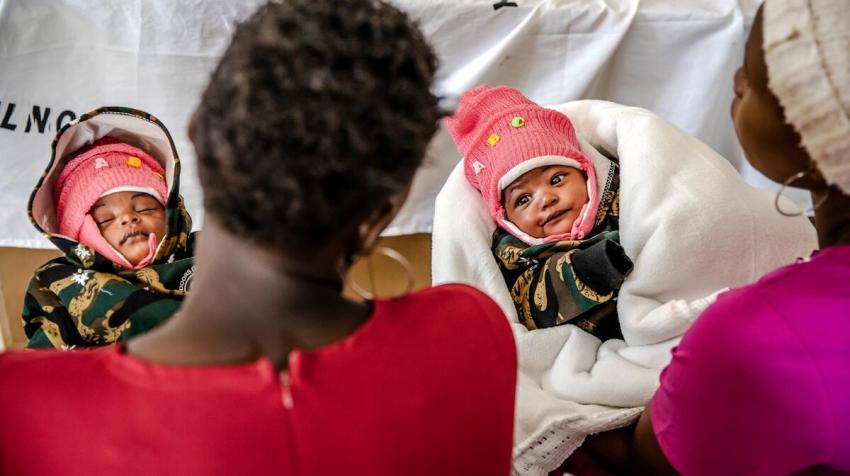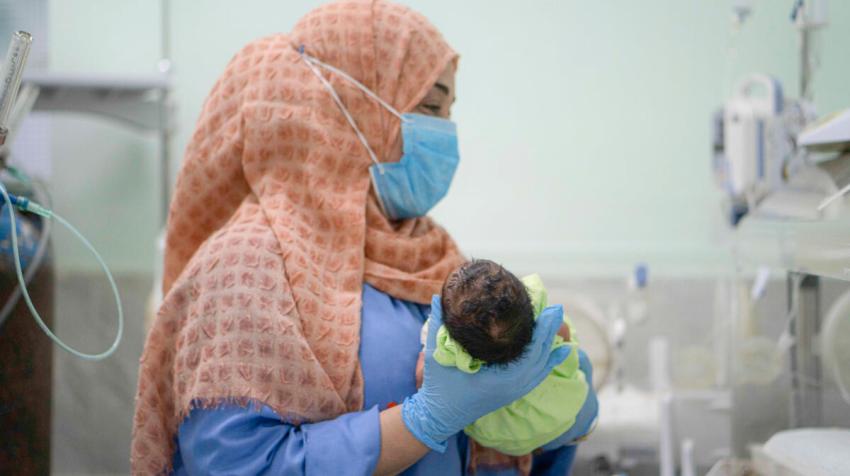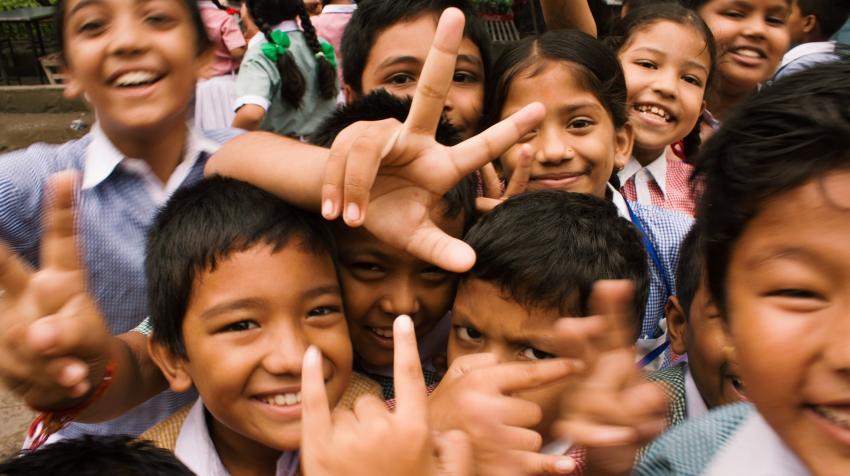Later this year, on 15 November 2022, the world population is projected to reach 8 billion. Seventy years ago, in 1952, it stood at 2.5 billion; and 70 years from now, by 2092, it will have grown by another 2.5 billion over current levels. Global population growth has been the overarching demographic story for decades and will remain a predominant trend for many years to come. Underneath this trend, however, lies growing demographic diversity. It is necessary to come to terms with this diversity to understand and address the increasingly divergent concerns of countries with demographic shifts, and we must support sustained and sustainable development.
Global demographic trends mask great diversity
In 1994, widespread concern over population growth brought world leaders together at the International Conference on Population and Development (ICPD), held in Cairo, Egypt, in 1994. Today, however, countries are concerned with a much wider range of demographic changes. Over previous decades, all world regions have seen marked improvements in life expectancy and falling fertility rates, which explain the rapid aging of populations everywhere, but important differences exist between regions. Population growth is currently concentrated in the world’s poorest countries, which remain at a relatively early stage of the demographic transition, while some of the richest countries are beginning to see population decline. Such decline has happened before—mostly during wars and famines—but this time it is different.
At the global level, population decline is driven by low and falling fertility levels. In 2019, more than 40 per cent of the world population lived in countries that were at or below the replacement rate of 2.1 children per woman; in 2021, this share climbed to 60 per cent. Net immigration has circumvented population decline in some Western European countries, for example, but high net emigration has exacerbated population decline in some of their Eastern European neighbours.
While the status quo might be comfortable for many, we need to recognize that the notion of a stable population is unrealistic.
Growing concerns about demographic shifts
Growing demographic diversity means diverging concerns about demographic change: While some of the poorest countries are concerned with how they can meet the needs of a large and growing population, some of the richest are worried about how they can promote fertility. Accordingly, countries now increasingly pursue divergent population policies with opposing objectives. Furthermore, over time, some countries have adjusted their population policies in response to new and emerging demographic realities. They have moved from policies focused on reducing fertility levels to explicitly pro-natalist policies seeking to raise fertility levels. These policy shifts are motivated by concerns about demographic change. Common worries are that population ageing and decline result in labour and skills shortages, weaken economic productivity and innovation, slow economic growth and development, impose unsustainable fiscal pressure on governments and people, lead to cultural and ethnic shifts in societies, and weaken the political and military power of countries. These demographic anxieties are apparent not only in populist media but also in political debate and indeed in academic literature that speaks of new “population busts”.
Whether these worries are justified, exaggerated or misguided, demographic changes do have far-reaching implications for sustainable development. Demographic change was identified by the United Nations Secretary-General as one of the megatrends that are greatly influencing the progress of the 2030 Agenda for Sustainable Development and the Sustainable Development Goals. They shape the objectives to provide essential goods and services for the population—including food, water, energy, housing, infrastructure, health, education and social protection—as well as prospects for full employment, better living standards and reduced environmental pressures. Meeting the needs and lifting the living standards of a large and growing world population will require higher levels of production and result in greater consumption. Without green reforms in energy, manufacturing and transport, as well as changes in human behaviour, this will place mounting pressures on the natural environment.

Renewed focus on population policies
Concerns over demographic shifts have raised questions about the existence of an ideal population size related to the notion of a stable population and reinvigorated interest in demographic policy. It has long been thought that a fertility rate of 2.1 is ideal, but what does this actually mean? Arguing for a rate of 2.1 when the world population was 4 billion is very different from making the same argument when the world population has reached 8 billion. The only way this can be explained is that there exist both an overriding interest in stable population numbers and a fear of any demographic change. While the status quo might be comfortable for many, we need to recognize that the notion of a stable population is unrealistic. The only constant is change; this certainly holds true for demographic shifts and it is best to come to terms with such change.
Any effort to define and achieve an ideal population size is prone to failure. First, we do not agree on a common set of criteria to define an ideal population size. Is it the size of the population we need to ensure the solvency of pension funds and meet the labour demands of businesses, or to minimize the environmental impact of human activity, currently or in the future?
Second, even if we did agree on these overarching criteria, we do not have the instruments to achieve an ideal population size. Efforts to boost fertility typically have temporary effects but they have not resulted in a sustained turnaround.
Finally, even if we knew how to boost fertility, we would need to decide whether this would be a temporary or permanent policy. If it is temporary, it only postpones the various challenges of population ageing and decline; if it is permanent, it causes a whole host of other problems.
Whatever the demographic situation of a country, it cannot justify population policies that undermine basic human rights.
The centrality of reproductive rights and choices
Of the three principal determinants of demographic change—fertility, life expectancy and net migration—most demographic policies focus on fertility. This is because life expectancy has only one acceptable direction of change, and migration is often viewed as too sensitive or complicated to be addressed by policymakers. With some caution, the difference between desired and actual fertility levels can be interpreted as a space for rights-based intervention to help people achieve their fertility preferences. In the poorest countries, a relatively large number of women have more children than they desire: To date, there are about 222 million women with an unmet need for family planning. In other countries, a rapidly growing number of women wish for more children. Undoubtedly, more can be done in all world regions to support women—and their partners—in achieving their fertility preferences.
This year’s edition of the flagship report of the United Nations Population Fund (UNFPA), The State of the World Population 2022, put a spotlight on unintended pregnancies. The report showed not only that many women have more children than they want, but also that many of them are not able to time and space births as they would like. According to the report, about half of all pregnancies worldwide are unintended, and more than half of those end in abortion, regardless of the legal context. The shockingly common inability of women to control their own bodies and reproduction represents a major failure of societies to ensure one of the most basic human rights, namely that of bodily autonomy.

In short, policies that help people achieve desired fertility can be perfectly compatible with and supportive of fundamental human rights. However, there is emerging evidence that some of the highly problematic policies aimed at controlling population numbers are gradually being replaced by other complex and difficult policies aimed at boosting population numbers. For fear of population decline, some countries are becoming less ambitious in ensuring universal access to family planning; some are restricting the right to abortion; some are banning sex education from school curricula; and some are propagating gender stereotypes that run counter to the empowerment and equality of women. Whatever the demographic situation of a country, it cannot justify population policies that undermine basic human rights.
Against this backdrop, three potential solutions emerge:
1. Plan ahead, using population data. Few outcomes within the realm of the social sciences can be projected with such a high degree of confidence as demographic change. Yes, there are notable differences in population projections 100 years out, but the differences are very small for the next 30 years, which is the period that really matters for policymaking. Countries must make more systematic efforts to collect population data, produce population projections and use those projections for policymaking. Had they done so in the past, current conditions of population ageing and decline would have come as no surprise and would hardly be seen as a “population bust” with potentially explosive implications. Countries must systematically consider demographic change in the formulation of development strategies, policies and programmes. Without knowledge of how many people exist, how old they are and where they live, and how population numbers, age structures and spatial distribution will change, countries will not be able to understand the current and future needs of their populations. Without demographic insights, evidence-based and people-centred policies will be questions of chance rather than design.
2. Build resilient institutions and societies. Countries need to consider and plan for future demographic changes and build institutions and societies that are resilient to and can thrive amid these demographic changes. Rather than focusing efforts on changing population numbers to meet the needs of economic systems, for example, countries should create economic systems that meet the needs of the population.
3. Pursue people-centred population policies. Instead of top-down population policies that focus on ill-defined and illusive demographic targets, countries should pursue people-centred population policies. Such policies would focus on empowering people to achieve their reproductive aspirations through the realization of sexual and reproductive health and rights, and support rather than undermine fundamental human rights more broadly. In many of the poorest countries, such policies would contribute to lower fertility rates and decelerate population growth; in others, they would contribute to higher fertility levels and arrest population decline. The only feasible and acceptable way to shape demographic change is through the empowerment of people.
To harness the power of 8 billion people it will be necessary to look beyond the aggregate and empower 8 billion individuals. This challenge has gotten bigger, however, in the wake of the COVID-19 pandemic. Based on research conducted by the World Bank, Oxfam has estimated that, in 2022, the number of people living in extreme poverty will be more than a quarter billion higher than would have otherwise been the case, amounting to 860 million. To date, millions of people continue to live in poverty and suffer from hunger, do not have access to health care or social protection, do not have decent work, and are unable to achieve primary and secondary education. Millions of women, in particular, lack equal opportunities. The world must stand as one and redouble its efforts to implement the 2030 Agenda and ensure progress towards the SDGs—it is the only way to realize the power of 8 billion people.
The UN Chronicle is not an official record. It is privileged to host senior United Nations officials as well as distinguished contributors from outside the United Nations system whose views are not necessarily those of the United Nations. Similarly, the boundaries and names shown, and the designations used, in maps or articles do not necessarily imply endorsement or acceptance by the United Nations.




